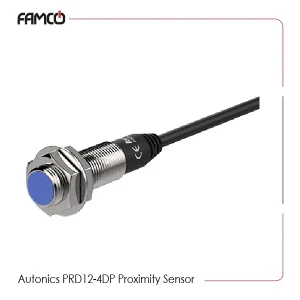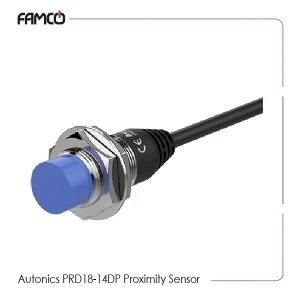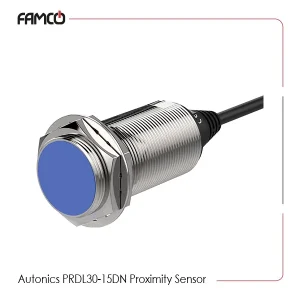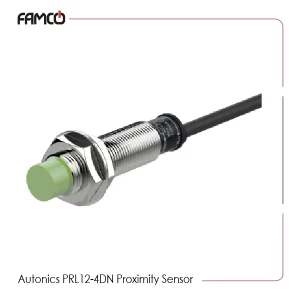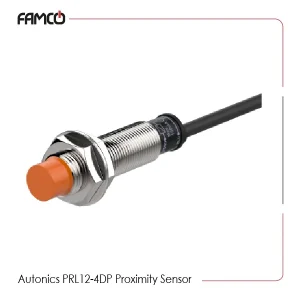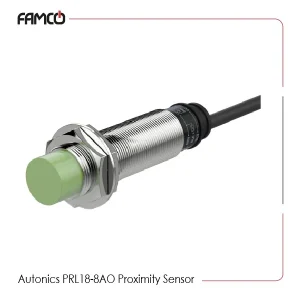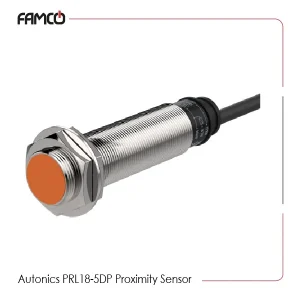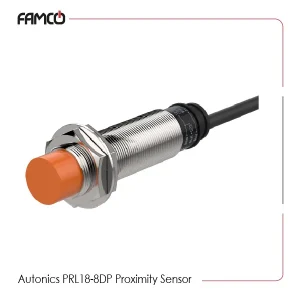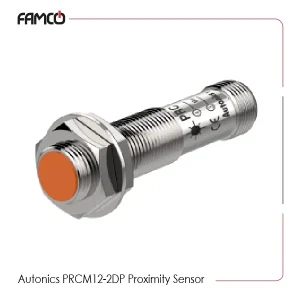Autonic proximity sensors provide a variety of robust, long-lasting, and very precise sensing options. Sensors, whether inductive, capacitive, or ultrasonic, are used in many different sectors, such as textiles, manufacturing, and packaging. Automotive proximity sensor is a great option for enterprises searching for accurate and effective detection systems, even with a few little problems like sensitivity and contamination.
All types of Autonic Proximity Sensor
In a variety of sectors, autonic proximity sensors play a vital role in detecting the presence of things without physical touch when accuracy and dependability are required. These sensors detect things using a variety of principles, and numerous varieties are available depending on the purpose. The main categories of Autonic Proximity Sensors are shown below:
Inductive Proximity Sensors
Inductive proximity sensors use electromagnetic fields to identify metallic objects. These sensors are often used in settings where it is required to identify metal parts or components. Their non-contact sensing capability and robust construction make them very dependable even in the most demanding industrial environments.
Capacitive Proximity Sensors
Liquids, polymers, and powders are examples of non-metallic materials that may be detected using capacitive proximity sensors. These sensors are perfect for a variety of uses in the manufacturing and packaging sectors since they measure variations in capacitance brought on by the presence of an item.
Ultrasonic Proximity Sensors
Regardless of the material type of an item, ultrasonic proximity sensors use ultrasonic waves to detect its existence. These sensors are renowned for their accuracy and adaptability to a variety of conditions, even those including impurities like moisture or dust.
Features of Autonic Proximity Sensor
Due to its diverse variety of capabilities, the Autonic Proximity Sensor may be used in a multitude of industries and applications. Even in the most demanding settings, these characteristics guarantee dependable performance.
Sensing Range
The sensor’s detecting range is important since it dictates how far an item may be detected by the sensor. Depending on the kind of sensor and the substance of the object, autonic proximity sensors are intended to provide a broad range of detecting distances. While ultrasonic sensors can detect things at larger distances, inductive sensors usually have lower ranges.
Output type
PNP and NPN transistors are two examples of the several output types that autonic sensors have, which enable the sensor to effectively interact with control systems. The output type guarantees the adaptability of the sensor and is contingent upon the needs of the application.
IP rating
Autonic Proximity Sensors are protected from water and dust by their IP certification. Because the majority of models are made to strict IP requirements, they may be used in industrial settings with high levels of moisture, dust, or other impurities.
Benefits of Autonic Proximity Sensor
With its various benefits, Autonic Proximity Sensors are a highly preferred option for several sectors due to their accuracy, robustness, and dependability.
Non-contact sensing
One of the main advantages is non-contact sensing, which prolongs the life of the sensor and the thing it detects by removing the wear and tear brought on by physical contact.
Fast response time
Because of their quick reaction times, these sensors are perfect for high-speed industrial settings where instantaneous feedback is required, including automated assembly lines.
Durability
Long operating life and lower maintenance costs are ensured by the sturdy materials used in the construction of autonic sensors.
Problems of Autonic Proximity Sensor
Despite their great efficiency, Autonic Proximity Sensors might present some difficulties for users, especially in polluted or complicated contexts.
False triggering
A prevalent problem is false triggering, which may happen if the sensor is too sensitive or exposed to unwelcome outside influences. To reduce this problem, shielding and calibrating must be done correctly.
Sensitivity issues
It might be difficult to modify sensitivity, particularly in situations when the materials of the objects are different. Inaccurate or unexpected detections of objects might arise from incorrect sensitivity settings.
Contamination
Particularly with capacitive and ultrasonic sensors, dirt, dust, and other impurities might interfere with the sensor’s ability to function. Enclosures for protection and regular maintenance might assist lessen this issue.
Applications of Autonic Proximity Sensor
Autonic proximity sensors are multipurpose and found in many different sectors:
Manufacturing
Autonic proximity sensors are used in the industrial industry to identify missing or present items during assembly. They guarantee that machinery runs without incident, reducing downtime.
Packaging
In order to identify the existence of objects prior to packing, packaging lines often need to use quick and precise sensing. These sensors are essential to the packaging business because they guarantee that each container is appropriately labeled and sealed.
Textile Industry
Proximity sensors are used in the textile industry to track the flow of textiles and identify irregularities in manufacturing. In the end, this lowers expenses by guaranteeing a seamless operation and preventing fabric waste.
Paper Industry
During the manufacturing process, paper alignment is detected using automated proximity sensors. They are essential for avoiding clogs and guaranteeing that paper materials are processed correctly.
Autonic Proximity Sensor Price
It’s crucial to evaluate the kind of sensor and its characteristics while evaluating the Autonic Proximity Sensor Price. More expensive sensors may have greater IP ratings, longer sensing ranges, or particular application characteristics. But because of their long-term dependability, they are a wise investment for sectors needing robust, quick, and effective sensing solutions.
Businesses may choose autonic proximity sensor manual that best suits their requirements and ensure they get the most out of these cutting-edge sensors by carefully going over the autonics proximity sensor catalogue and comprehending the autonic proximity sensor handbook. Autonic provides a flexible solution that is suited to your needs, whether you need an autonics inductive proximity sensor or a sensor for the automobile proximity sensor sector.
If you would want further information about the autonics inductive proximity sensor or if you have concerns about the proximity sensor purpose or how accurate are proximity sensors, looking at the official product documentation and application instructions could provide further insights. Moreover, the kinds of automotive proximity sensors are made with automotive uses in mind, where precision and durability are very vital.

